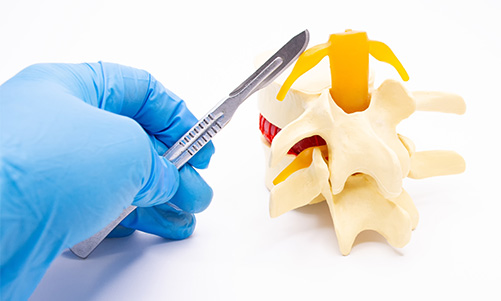Laminectomy is a surgical procedure that involves removing a part or all of the lamina, a part of the vertebra that offers protection to the spinal cord and nerve roots. A laminectomy is performed on the lumbar spine to relieve pressure on the nerve and spinal cord that may cause pain, numbness, or tingling in the back, arms, and legs.
Consult with the for a laminectomy at the CK Birla Hospital.

Laminectomy is performed to relieve pressure on the spinal cord and nerves caused by conditions like arthritis, bone fractures, bone spurs, herniated discs, spinal stenosis, and more. Laminectomy helps treat persistent neck or back pain, numbness or tingling in the back, muscle weakness, difficulty walking or standing, etc. Laminectomy is more common among older adults, people with physically demanding jobs, obese individuals, people with a history of spine injury, and others.
Note: The costs mentioned above are approximate and can vary based on factors such as the hospital’s location, the surgeon’s expertise, the complexity of the procedure, and the patient’s specific condition.
Prevention of the risk of spinal issues includes maintaining a healthy lifestyle, regular exercise, good posture, and a normal weight.
Recovery after a laminectomy depends on the individual and the complexity of the surgery. Usually, a full recovery after the surgical procedure may take four to six weeks. However, a laminectomy with spinal fusion may take six months or longer.
Laminectomy doesn’t inherently weaken the spine.
No, post-laminectomy syndrome is not a disability, but it can lead to disability.
Recovery time after a laminectomy can vary depending on the patient’s age and the complexity of the surgery.
Light exercises and stretching can be started within a few weeks after a laminectomy.